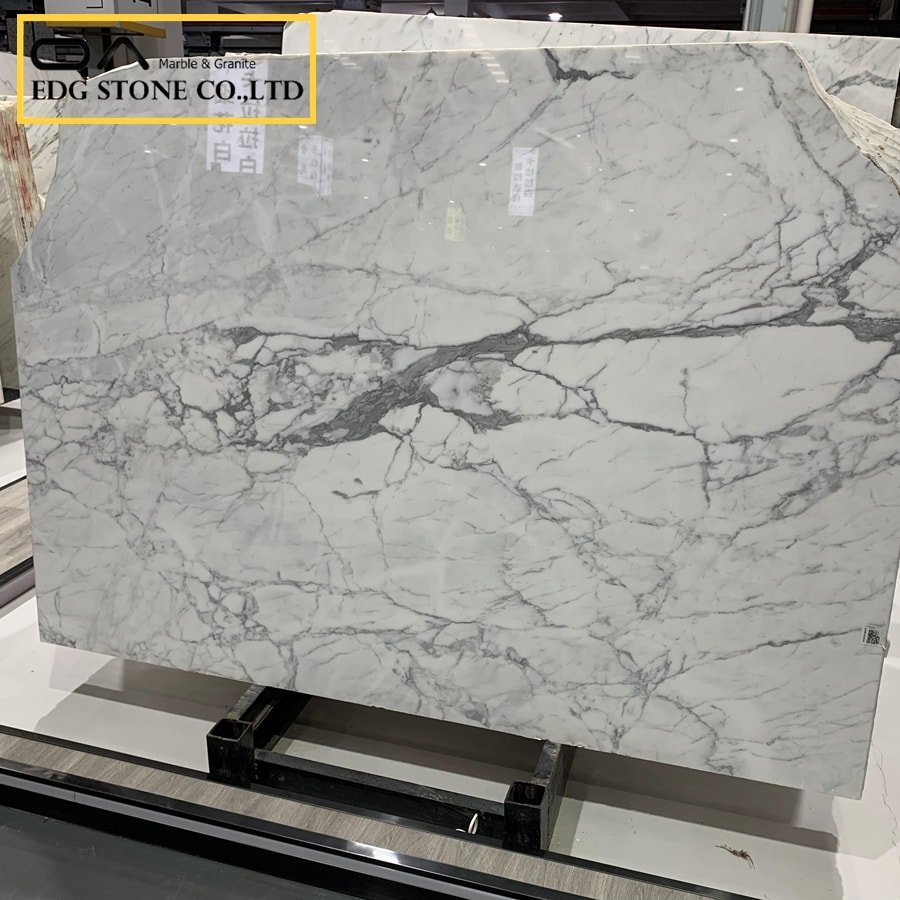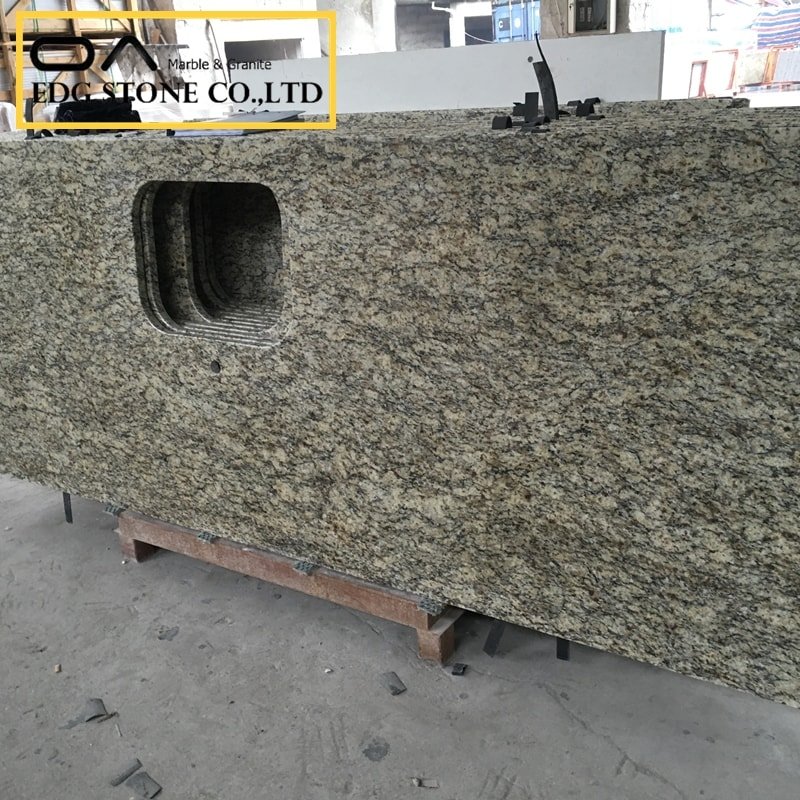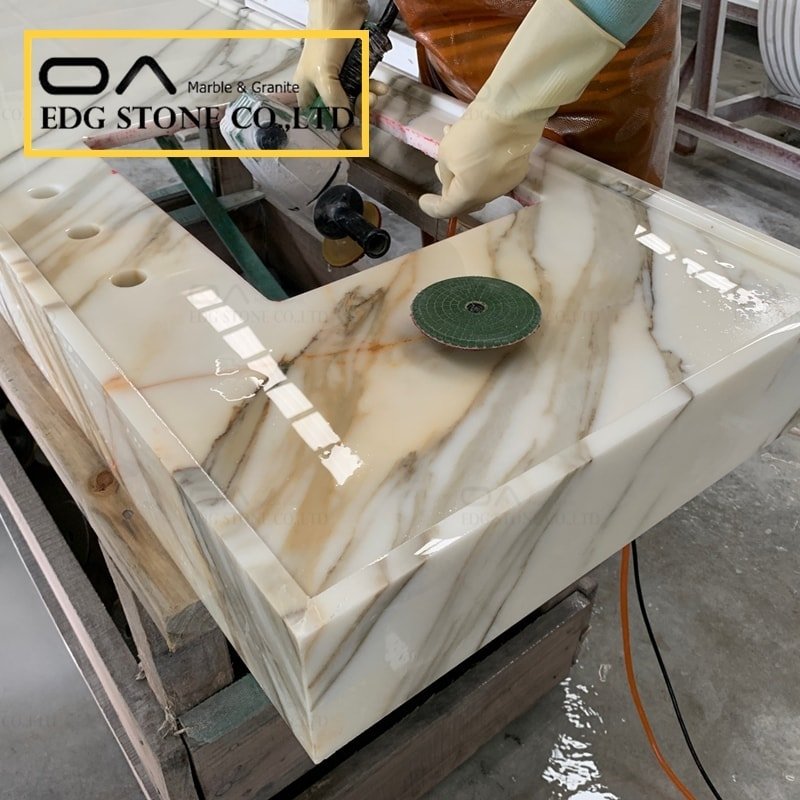The application of a variety of different formulations and a wide range of additives makes the performance of artificial stone increasingly perfect. Cementing agents are not limited to polymers (such as unsaturated polyester resins, epoxy compounds), inorganic adhesives (such as cement, lime, and other silicates) can also be used. Aggregates have also developed from marble, calcite, and quartz sand to the use of industrial waste residues. (Such as blast furnace slag, copper slag, nickel slag, waste glass, etc.). According to the raw materials used in the production of artificial stone, it can be divided into the following four categories:
1. Resin artificial stone
Resin-type artificial stone is based on unsaturated polyester resin as the cementing agent, mixed with natural marble crushed stone, quartz sand, calcite, stone powder, or other inorganic fillers in a certain proportion, and then adding catalysts, curing agents, pigments, and other additives. It is processed by mixing and stirring, curing and forming, demoulding and drying, and surface polishing. Products using unsaturated polyester have good gloss, bright colors, strong workability, and good decorative effects; this resin has low viscosity, is easy to shape, and can be cured at room temperature. Molding methods include vibration molding, compression molding, and extrusion molding. The artificial stone used in interior decoration projects is mainly of resin type.
2. Composite artificial stone
The binder used in composite artificial stone includes both inorganic materials and organic polymer materials. The production process is first to use cement, stone powder, etc. to make a cement mortar body, and then immerse the body in an organic monomer to polymerize it under certain conditions. For the board, the bottom layer is made of stable and inexpensive inorganic materials, and the surface layer is made of polyester and marble powder. Inorganic cementitious materials can be quick-hardening cement, ordinary Portland cement, aluminate cement, fly ash cement, slag cement and plaster of Paris, etc. The organic monomers can be styrene, methyl methacrylate, vinyl acetate, acrylonitrile, butadiene, etc. These monomers can be used alone or in combination. The cost of composite artificial stone products is low, but the polyester surface is prone to peeling or cracking after being affected by the temperature difference.
3. Cement type artificial stone
Cement-type artificial stone is an artificial stone made of various cement as cementing materials, sand, and natural crushed stone particles as coarse and fine aggregates, which are prepared, stirred, pressurized and steamed, polished, and polished. In the preparation process, color materials can be mixed to make colored cement stone. The production of cement-type stone is convenient and inexpensive, but its decorativeness is poor. Terrazzo and all kinds of flower-grade bricks belong to this category.
4. Sintered artificial stone
The production method of sintered artificial stone is similar to the ceramic process. It is to mix feldspar, quartz, pyrochlore, calcite, and other powders with hematite powder and a certain amount of aged soil. The general ratio is 60% stone powder. Clay is 40%, the billet is prepared by the slurry mixing method, formed by the semi-dry pressing method, and then calcined in a kiln at a high temperature of about 1000°C. Sintered artificial stone has good decoration and stable performance, but it needs to be fired at a high temperature, so it consumes a lot of energy and is expensive.
Because the unsaturated polyester resin has the characteristics of low viscosity, easy to shape; good gloss; light color, easy to be formulated into various bright colors and patterns; fast curing, and can be operated at room temperature. Therefore, among the above-mentioned stones, the most used stone is currently It is widely used as a resin-based artificial stone produced with unsaturated polyester resin as a cementing agent. It has stable physical and chemical properties and a wide range of applications. It is also called polyester synthetic stone.









